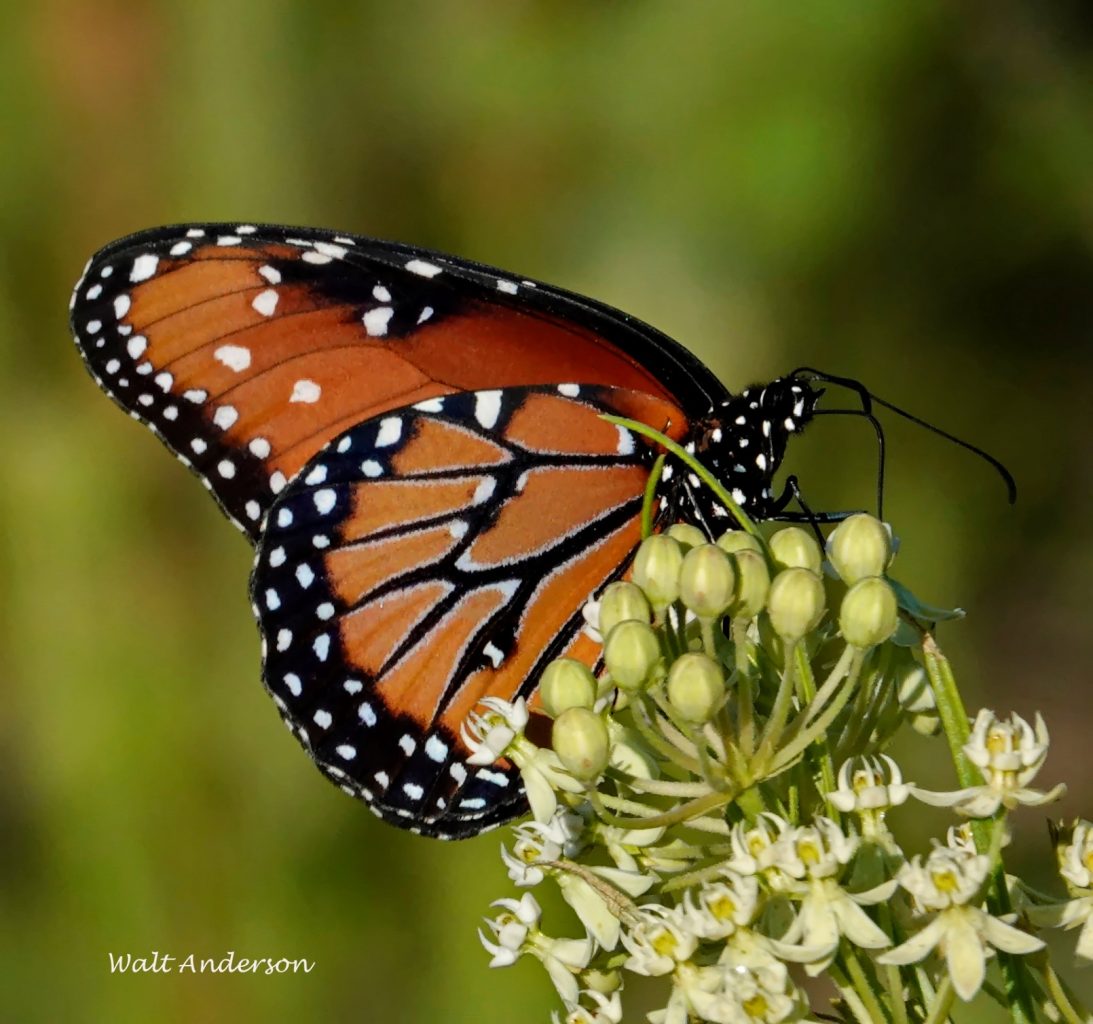
Among Friends. Got Milk? Milkweeds, by Walt Anderson
Most people are aware of the Monarch, the poster-child butterfly for its dramatic migrations and conspicuous beauty. Once super-abundant and widespread in North America, the Monarch has fallen victim to many human-induced sources of mortality. Millions of acres of breeding habitat (basically milkweeds) have been lost to soybean, corn, and other crops; caterpillars have been wiped out by widespread uses (misuses) of deadly pesticides intended for other insects; and wintering populations in Mexico have been displaced by illegal logging. Monarchs east of the Rocky Mountains have declined by more than 90% since the 1990s, and those west of the Rockies are down over 95% since the 1980s. Yikes! Conservationists have lobbied to get the species listed under the Endangered Species Act since 2014. In December 2024, the US Fish and Wildlife Service proposed listing it as Threatened under the ESA, and now after the public comment period, they have a year to make a decision. There is no time to waste to stop the precipitous decline, and many groups and individuals are working to try to turn the tide.
The key to saving the Monarch is saving milkweed. The genus Asclepias contains about 140 species containing a milky latex composed of nasty alkaloids called cardiac glycosides (cardenolides). Yup, toxins you won’t want to fool with! Yet milkweeds are the centerpiece of many relationships, both in spite of and because of its properties. In late summer, milkweeds are often where the action is—gathering insects of many kinds. So the theme of this essay is milkweed and its associates. Got milk?
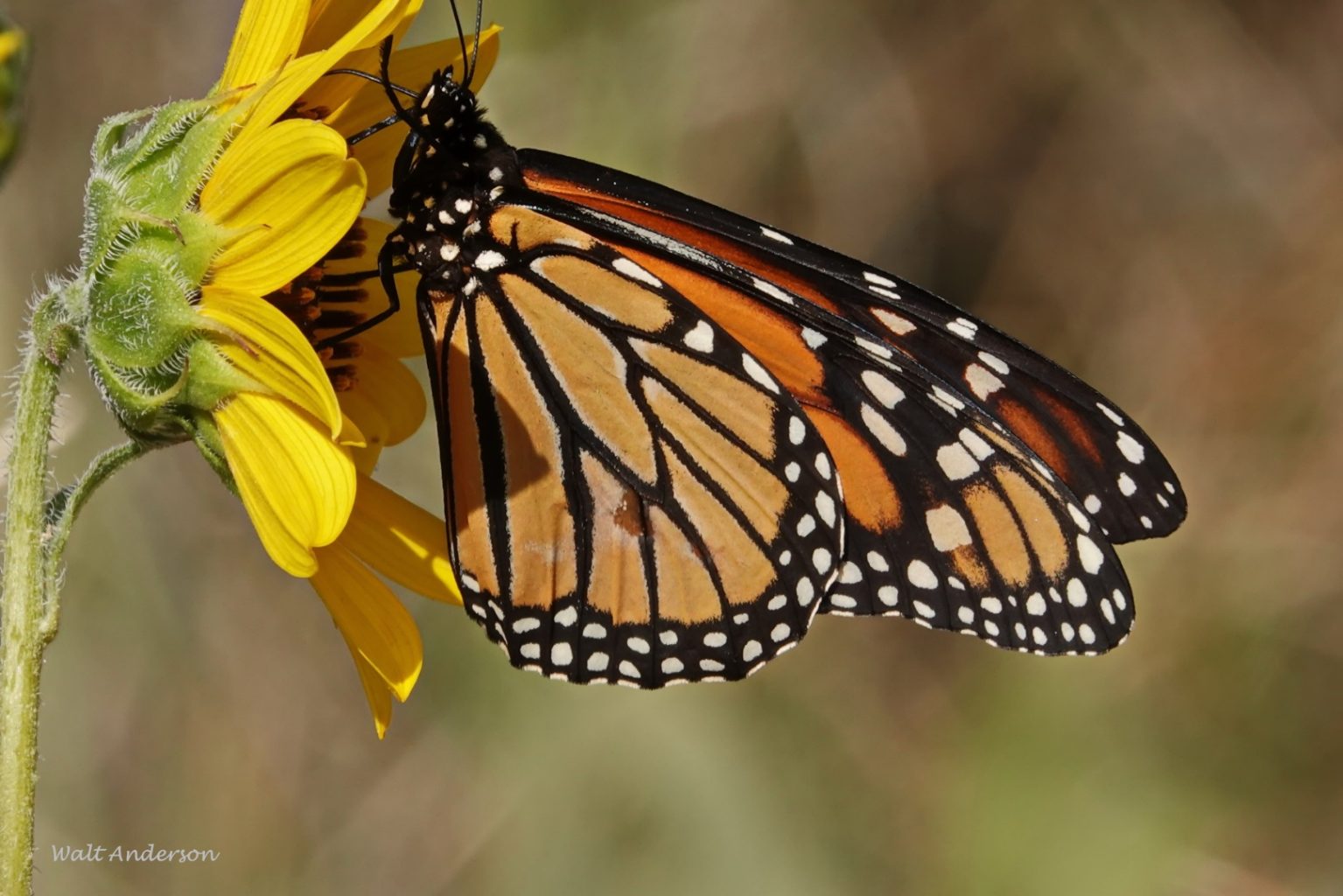
With striking orange, black, and white patterns, the Monarch is conspicuous for a reason. Its showy colors represent a warning that most potential predators learn rather quickly if they taste a bit of wing. The bitter alkaloids elicit quick rejection and a powerful lesson that makes a lasting impression. We see this phenomenon often in nature: brilliant colors (often oranges and reds contrasting with black and/or yellow) advising “leave me alone!” Monarchs lay their eggs on milkweeds, and the caterpillars, who have evolved resistance to the toxins, take up the poisons into their bodies to provide defense.

The Queen, here on a Horsetail Milkweed, is similar to a Monarch. They are close relatives, and both may benefit from sharing the color pattern that predators learn to avoid. Convergence on similar colors helps create an easily learned avoidance image. Charles Darwin came up with the concept of sexual selection, in which bright or showy colors in birds or expensive ornamentation (e.g., horns, antlers) in mammals would be selected for by choosy females. However, this didn’t seem to make sense for showy insects like the Monarch. His friend, Alfred Russel Wallace, suggested the idea of warning coloration, and he was right. This soon became known as aposematism, and you’ll see more examples later in this story. If it works, long live the Queen!
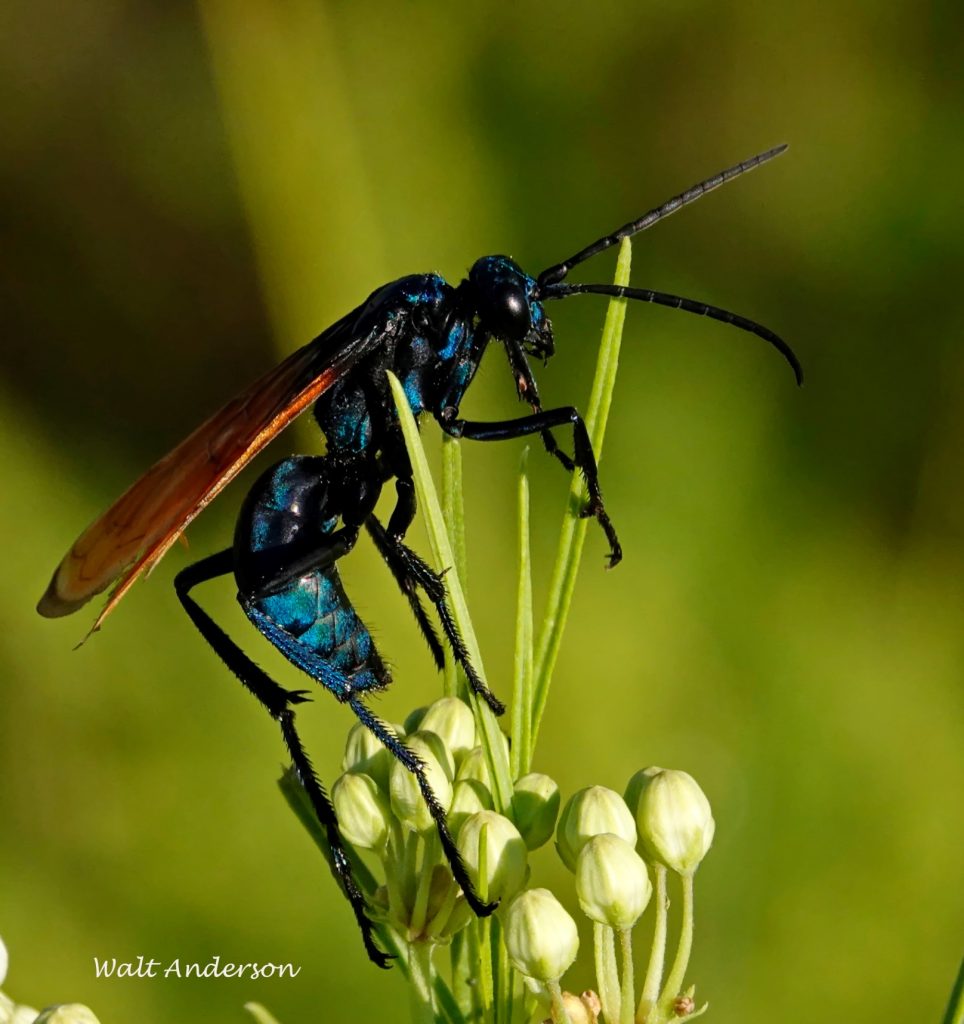
Tarantula Hawks provide another fine example of aposematism. In this case, the large wasps do not sequester milkweed toxins into their bodies; the warning is for their powerful stings (one of the most painful stings a human can receive). Nobody with common sense picks up a Tarantula Hawk! Thus the wasp can feed on milkweed nectar without fear of being picked off by a predator (though Roadrunners are known to take them on occasion). Viewed closely, this wasp is simply stunning.
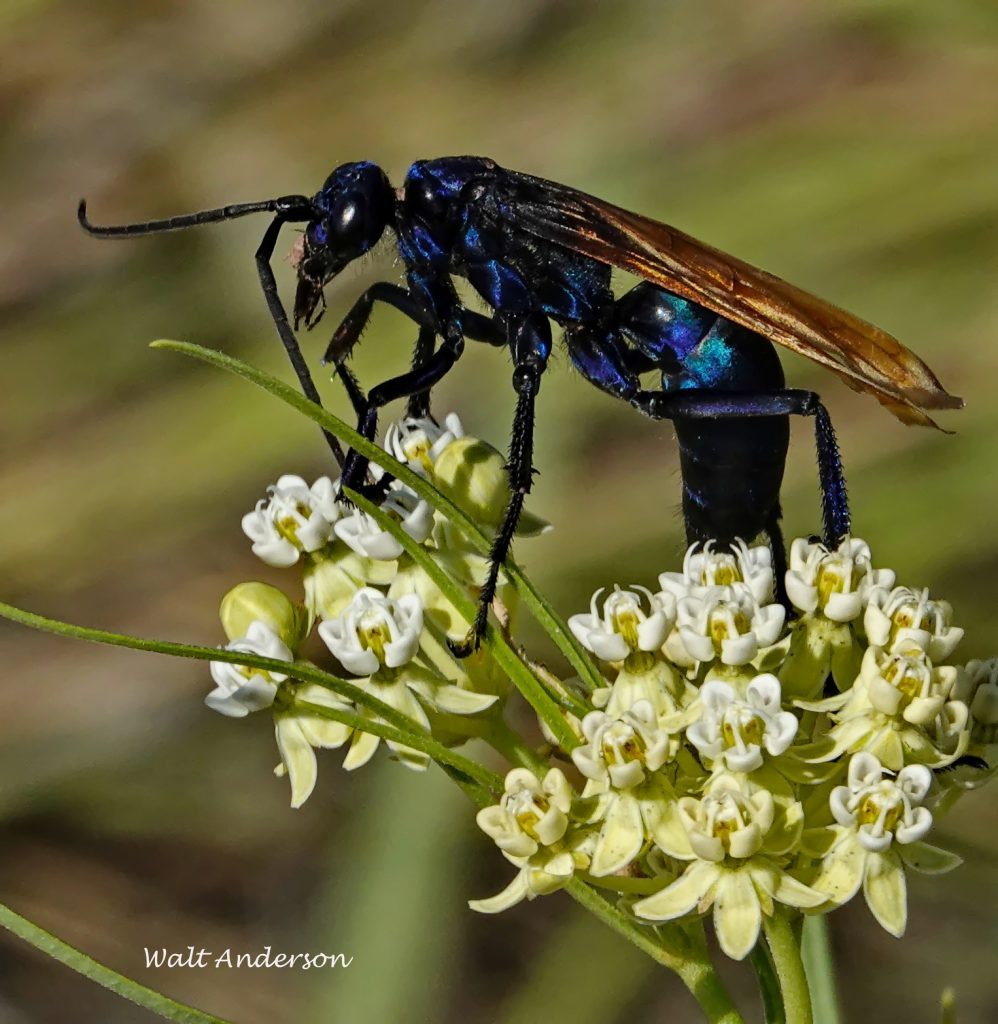
And stunning is exactly what happens to a tarantula that gets attacked by one of these parasitic wasps. The female wasp stings the spider and hauls it off to her nest, where her larvae will live inside the stunned host, eating it gradually while avoiding its vital organs to keep it fresh, then pupating before becoming a new adult. The tarantula has served an ecological purpose, though without any personal reward.
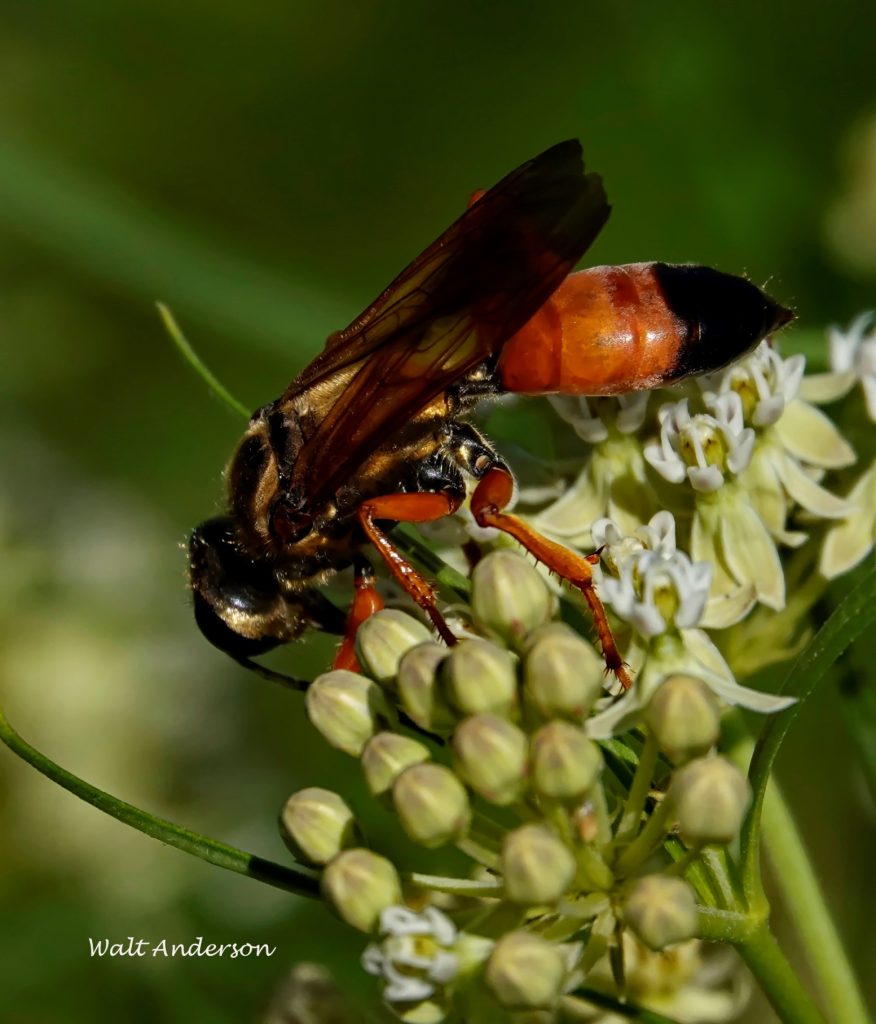
The female Great Golden Digger Wasp is another beauty that nectars on milkweed. She digs a vertical nest tube with horizontal chambers off to the sides. In these, she places stunned crickets or katydids, each planted with an egg that hatches into a larva that feeds again on the living host. Jiminy cricket!
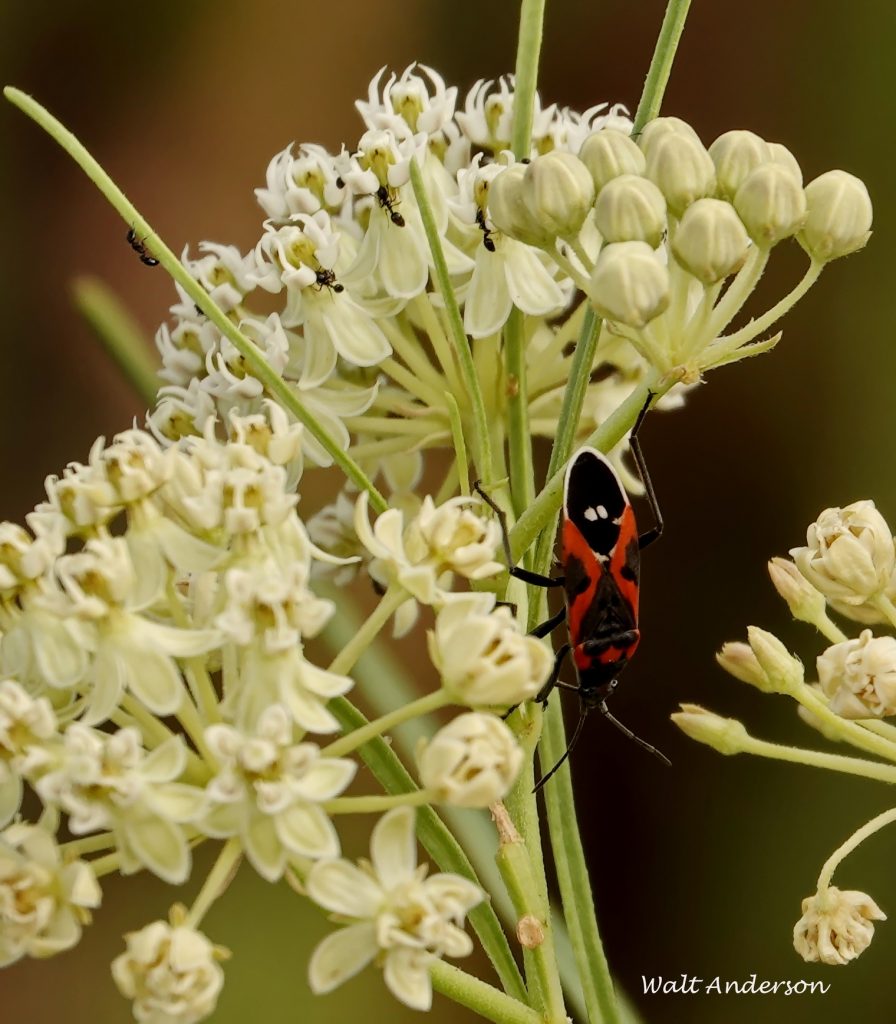
The Small Milkweed Bug also displays an aposematic pattern; it too sequesters toxins from the milkweed. Adult bugs, however, can prey on Monarch caterpillars or pupae, just another example of the complex communities that can form on milkweed plants.
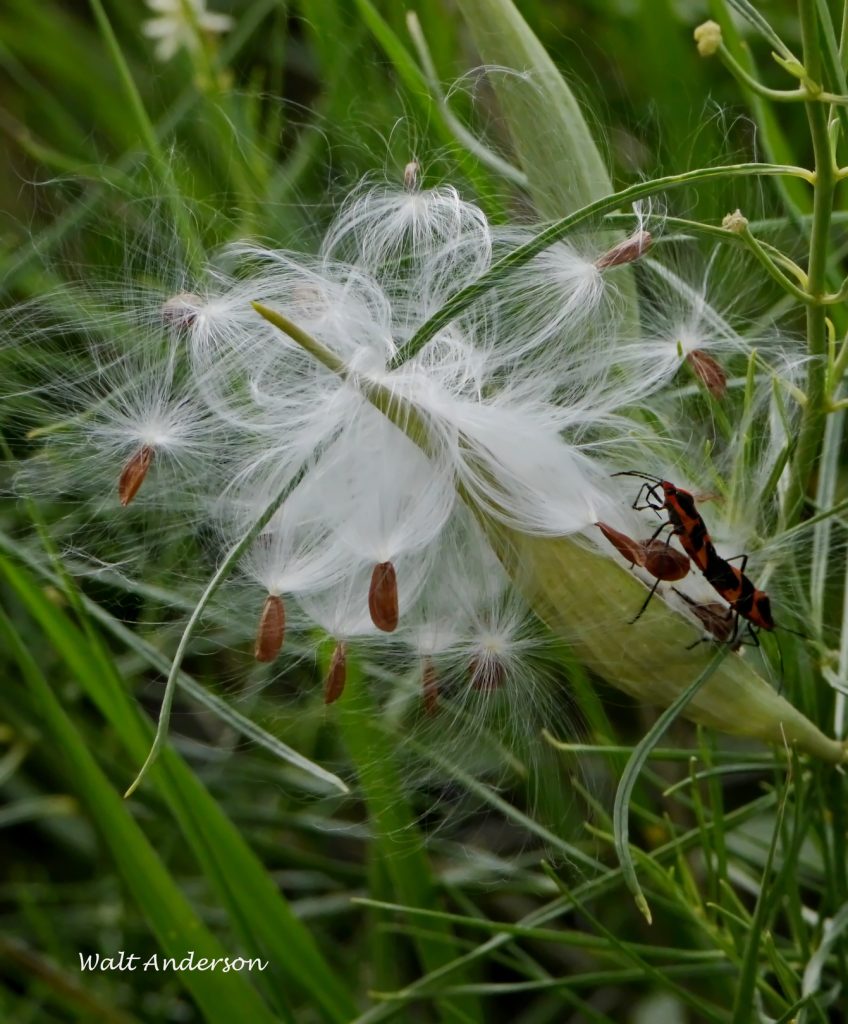
The similar (through mimicry) Large Milkweed Bug also is toxic, but it doesn’t bother Monarchs at all. It actually feeds on milkweed seeds! It has two feeding tubes next to each other. One tube secretes digestive juices into the seeds, while the other sucks out the predigested fluid. Really slick! In northern parts of its range, it is migratory.
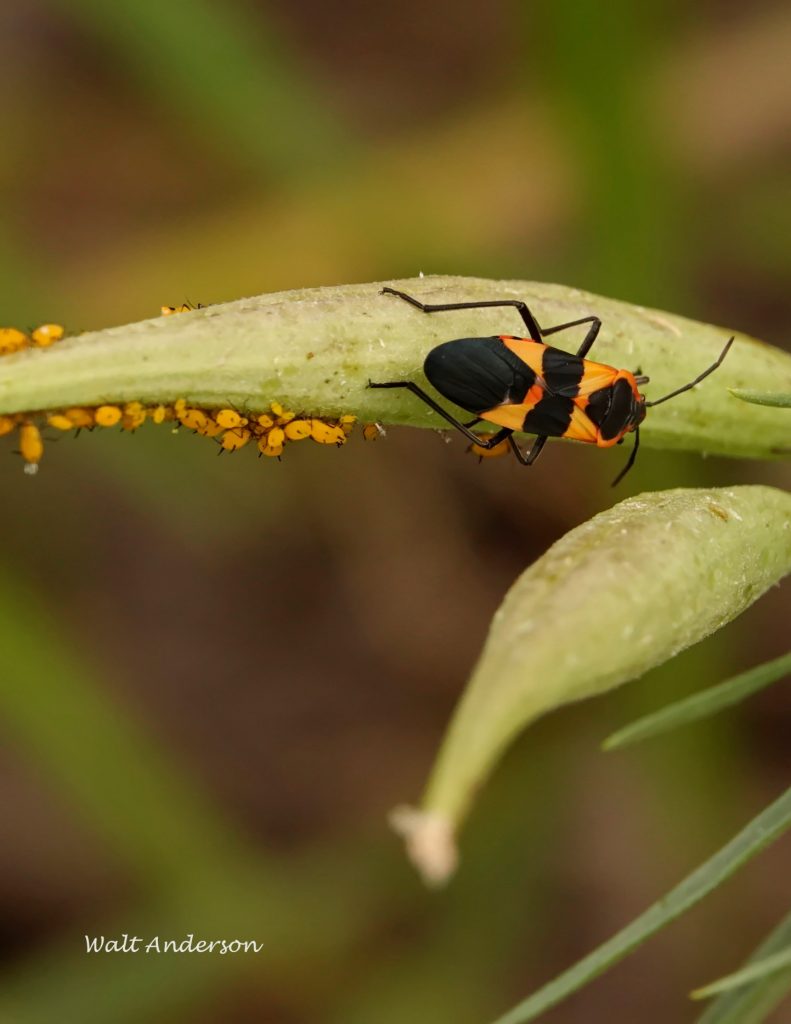
A closer view of a Large Milkweed Bug on a milkweed pod. Those funny little yellow things that look like they came straight from a kid’s computer game are aphids.
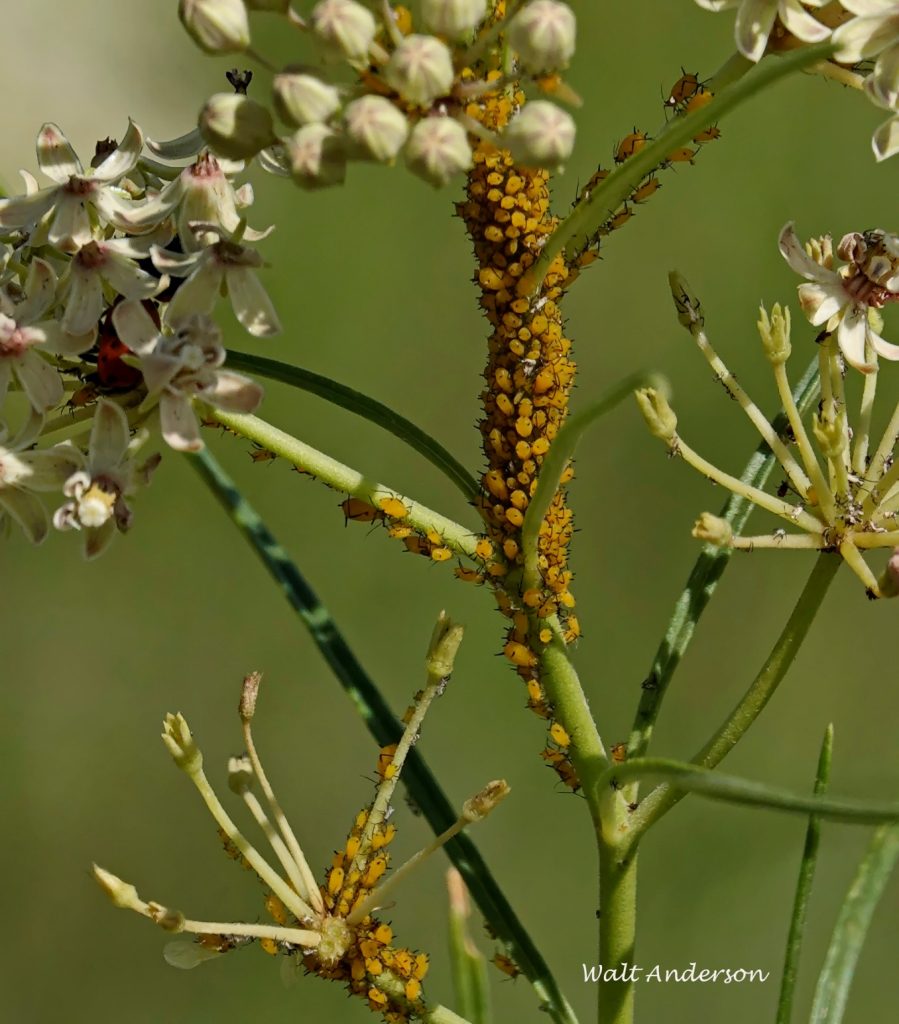
These are Oleander or Milkweed Aphids, native to the Mediterranean region and thus an invasive non-native here. They too sequester cardiac glycosides from the milkweed host, which help repel spiders and other predators, though there are some wasps that parasitize them. They are viviparous and parthenogenetic; that is, they give live birth to their nymphs, which are all clones of the mother aphid (they have no males—the ultimate in women’s liberation). They are sap suckers and can damage the plant. When a colony gets overcrowded or the plant declines too much in its vigor, some individuals grow wings and fly to other plants to start a new clonal colony. Look carefully on the lower left to see one of these winged alates. Also, look for a red and black predator lurking in the flower cluster on the upper left.
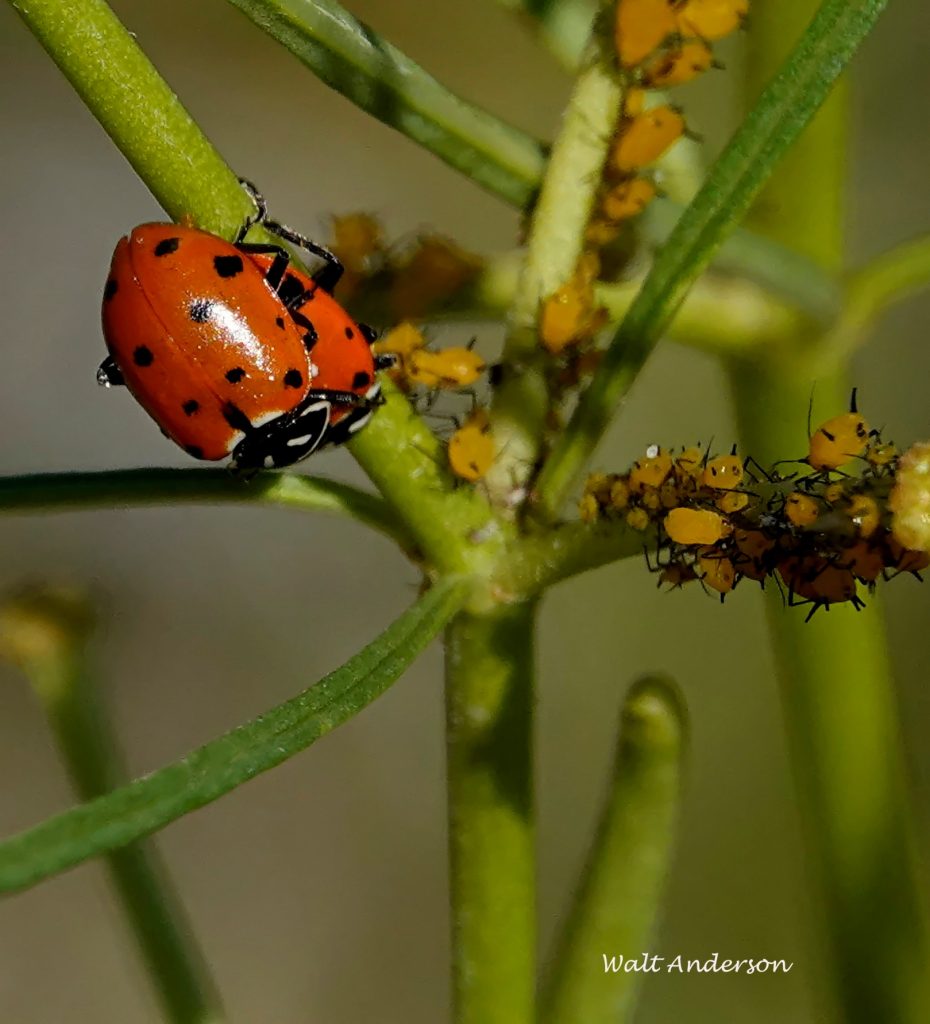
Yup—it’s a ladybug (more accurately called a ladybird beetle). They do prey on aphids, though this pair seems rather preoccupied with each other.
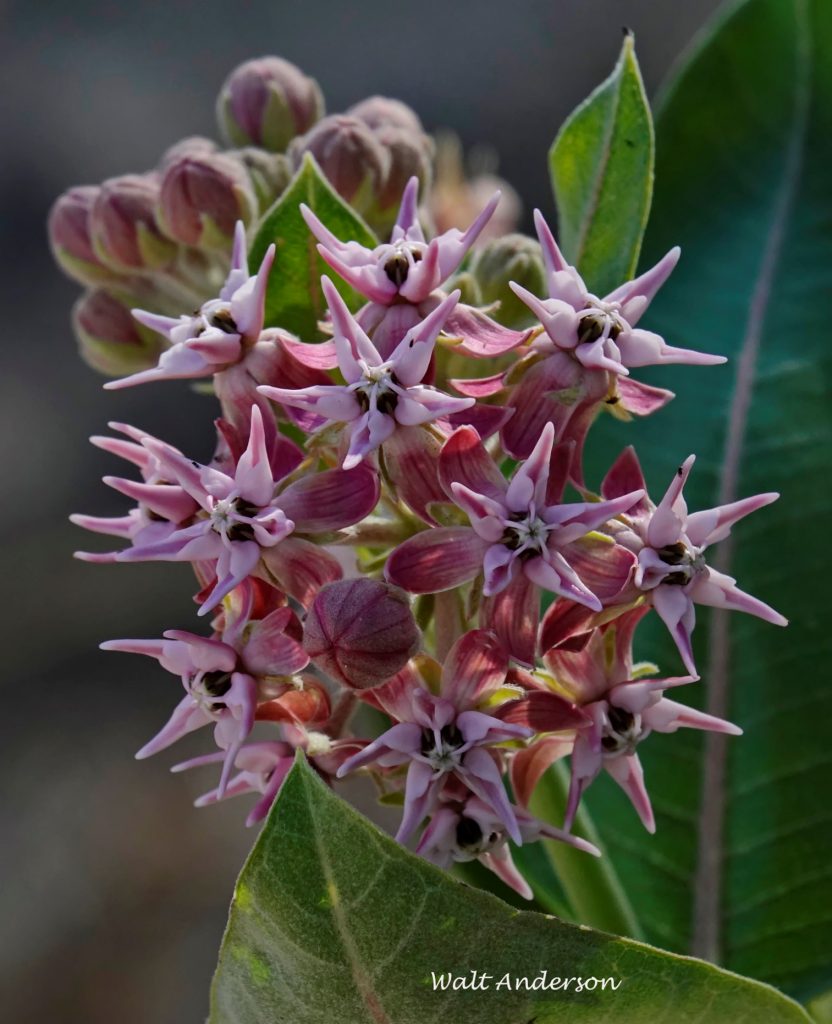
A couple years ago, we planted a Showy Milkweed in our yard, and Monarchs did find it that first summer. This year it again grew to a robust plant about four feet tall with gorgeous flowers.
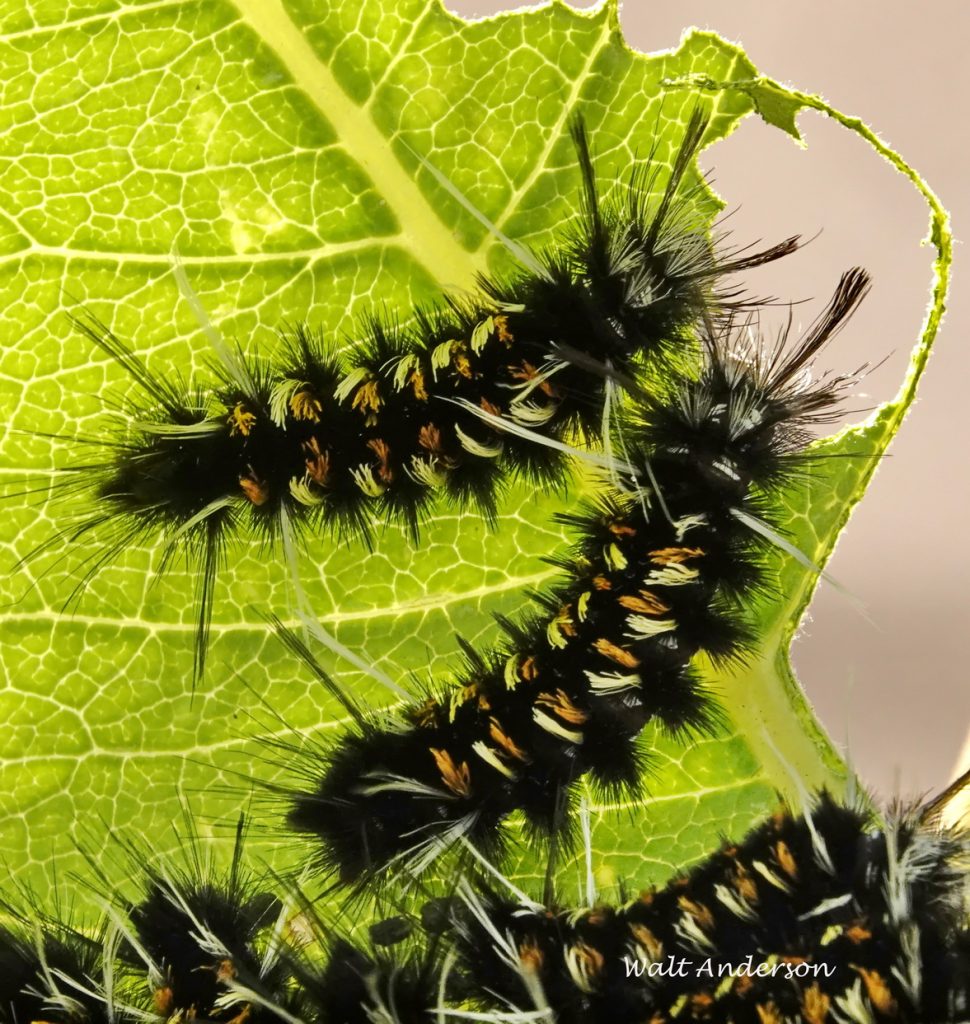
One day we found hairy caterpillars on the leaves and realized that they were not Monarchs. With warning colors and irritating bristles, these too were obviously not something to handle or try to eat (not that I was tempted). Milkweed Tussock (or Tiger) Moths are native, and their host plant is also the milkweed. At first, we were pleased to see some striking native caterpillars on our plant.
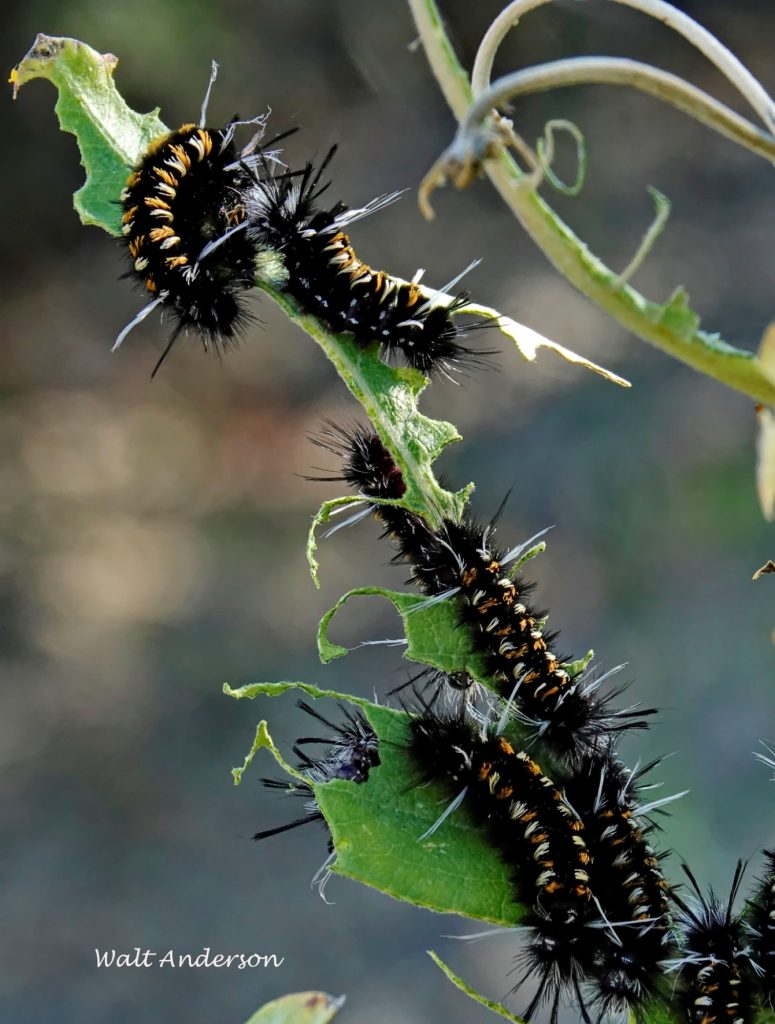
But soon our beautiful plant was covered with hundreds of these bristly critters, who rapidly began to skeletonize the entire plant, leaving nothing for any Monarchs that might come by. The milky latex in the major veins can be sticky for the caterpillars, but the older larvae cut off the latex supply, so “leftovers” are minimal.
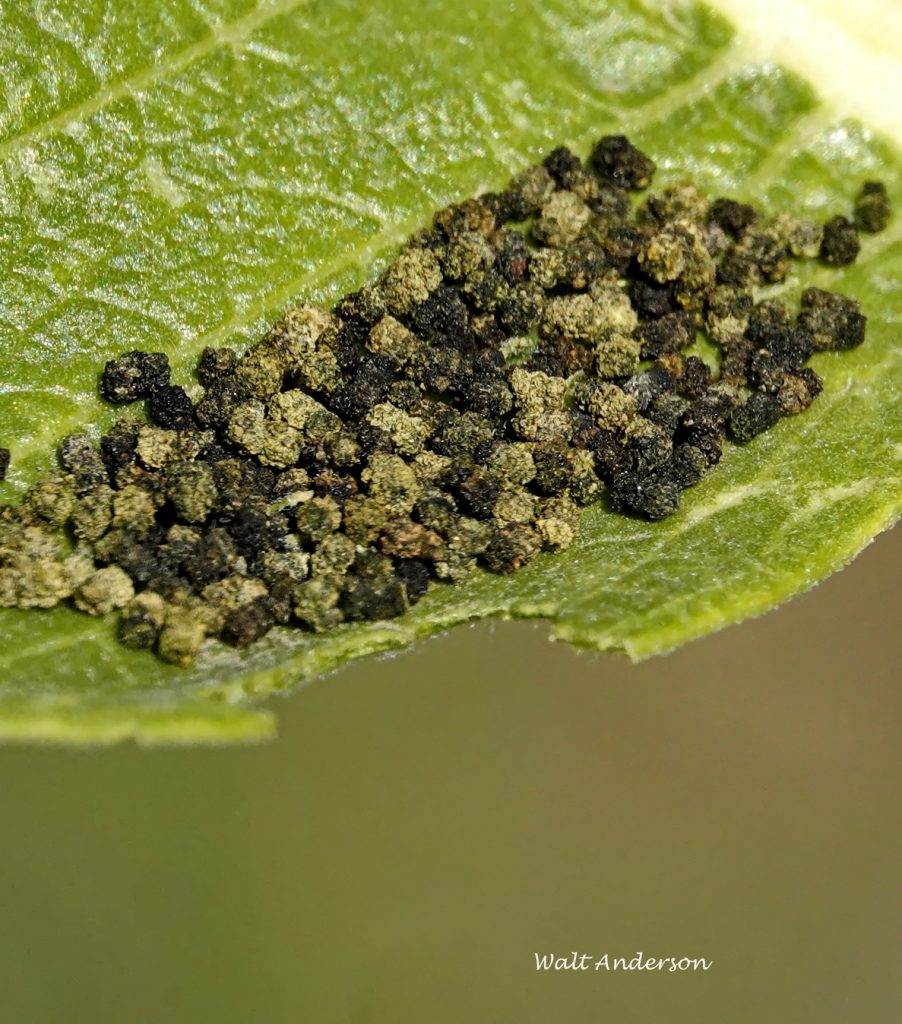
As the plant is devoured, post-digestive bundles (I am trying to be polite) accumulate below the voracious caterpillars. Insect excrement is known as frass. Good entomologists really know their frass.
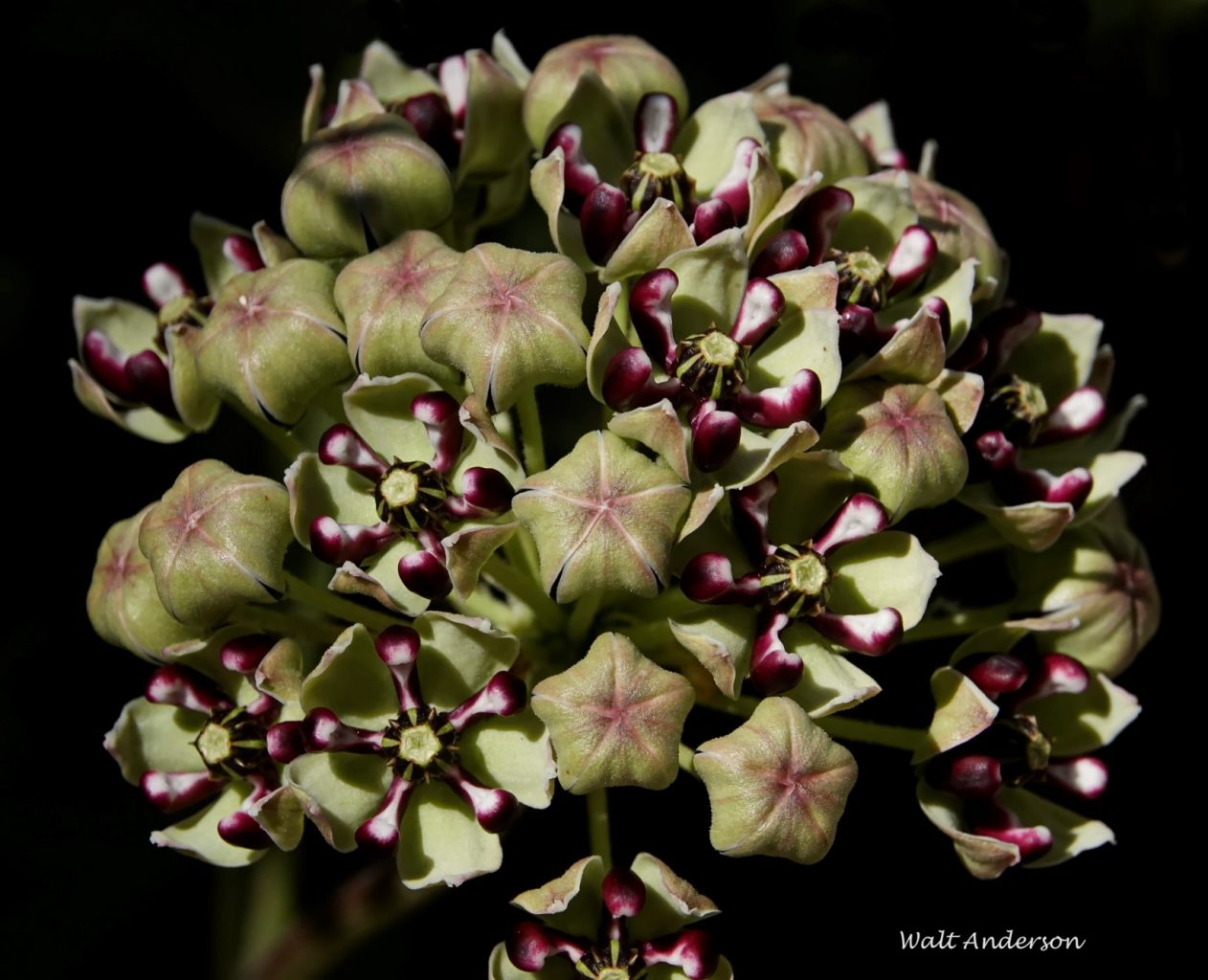
Many insects are attracted to nectar in the flower clusters, some of them stunningly beautiful, like this Antelope Horns. Evolution has rigged a trap for the unwary insect. As it crawls around on the flowers, a leg may slip into what is called a stigmatic slit. As the insect tries to free its trapped leg, it picks up a cluster of pollen called a pollinium. When the insect travels to another milkweed of that species, it can deposit the pollinium appropriately, thereby pollinating the flower.
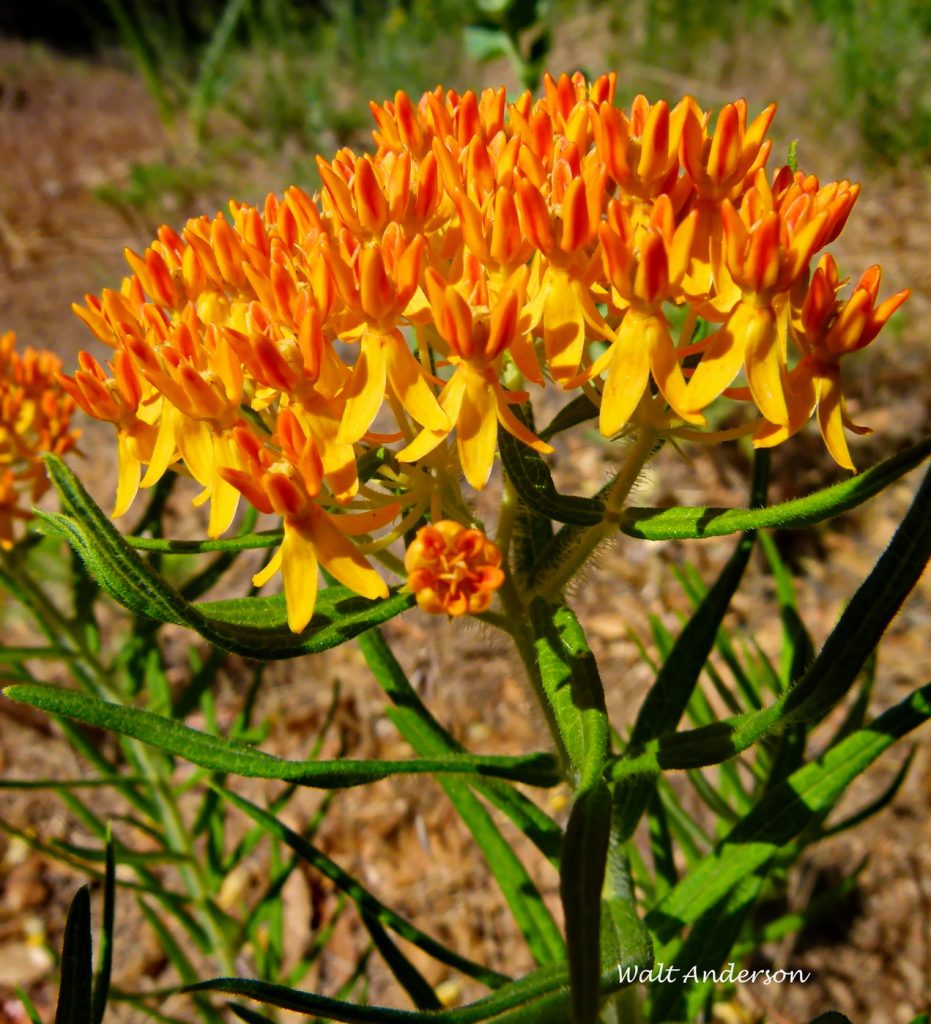
Another gorgeous milkweed is Butterflyweed, certainly one of the most attractive of our native flowering plants. Despite its name, it is more often pollinated by bees and wasps than butterflies. With hairy stems and lower concentrations of alkaloids than most milkweeds, it is not a favorite of the Monarch, though caterpillars of both the Monarch and the Milkweed Tussock Moth can survive on it.
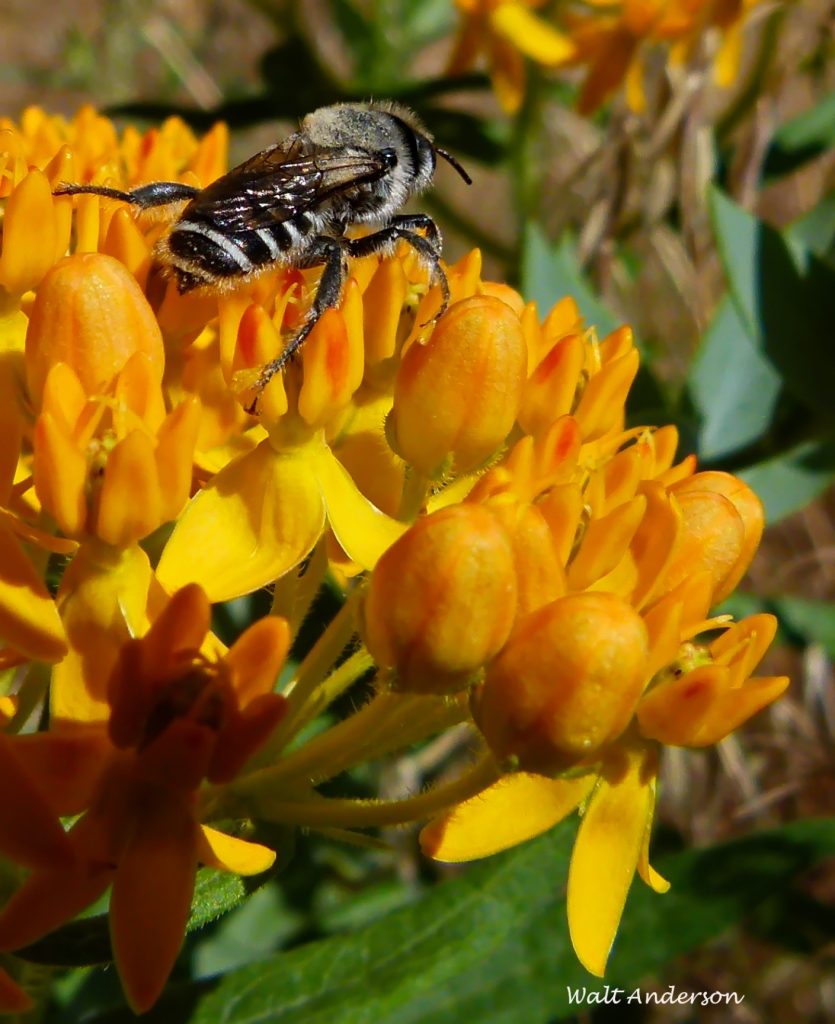
One pollinator I have found on it is the Polyester Bee, also called a Cellophane or Plasterer Bee. They line their nests with mouth secretions that dry to appear like cellophane or polyester. Composed of chains of real ester molecules, the lining is waterproof and resistant to invasion by fungi. The mothers of some species provision each brood chamber with a sloppy mixture of pollen and nectar, the result smelling a lot like beer but using lactic acid bacteria for fermentation instead of yeast. Bee brew!
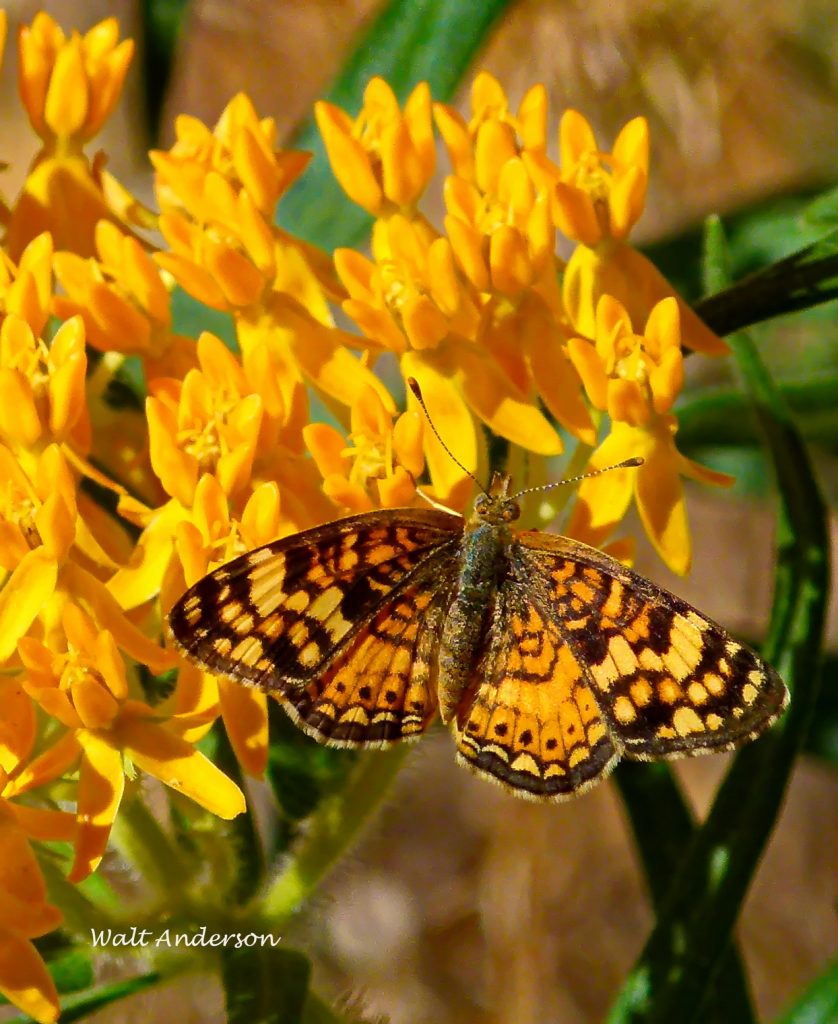
When you find milkweed, stay still and watch the goings-on. Chances are that you will be greatly rewarded for your patience. Here a tiny Mylitta Crescent is visiting its namesake Butterflyweed.
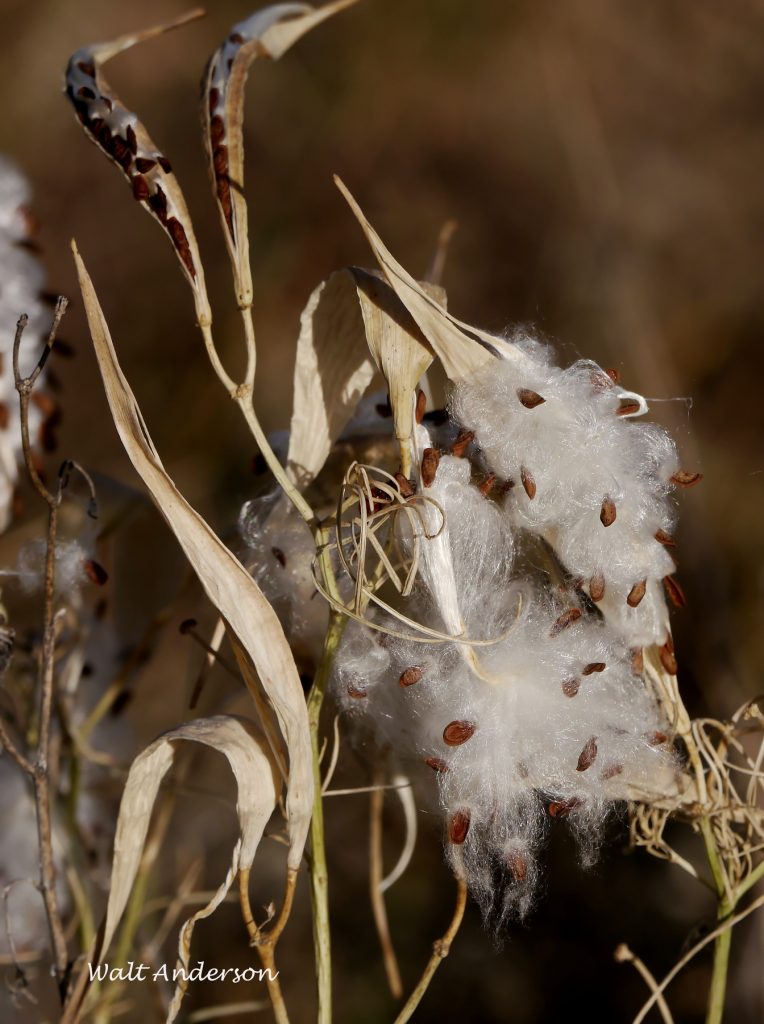
By fall, insects are no longer active at the milkweed plants, but the pods have opened to reveal large seeds attached to fluffy parachutes that will ride the wind to new destinations.
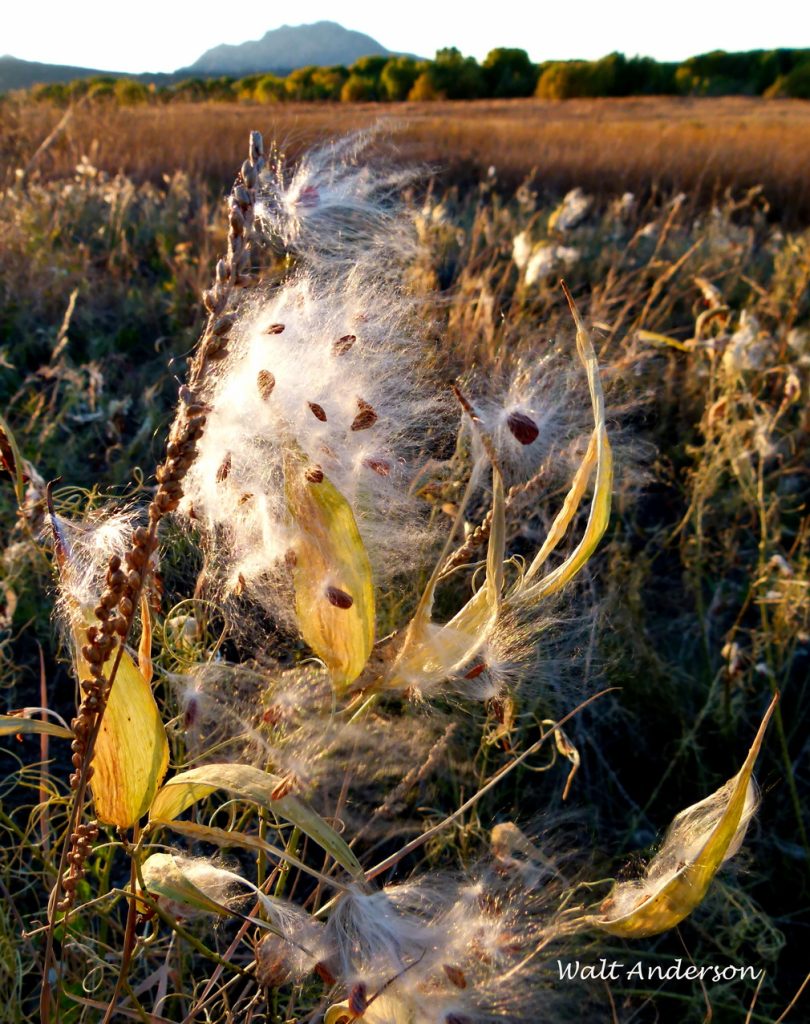
When I encounter an autumn milkweed, I admire its delicate beauty and recall the wonderful stories of its insect visitors during the summers of its life, for that’s the milky way.
